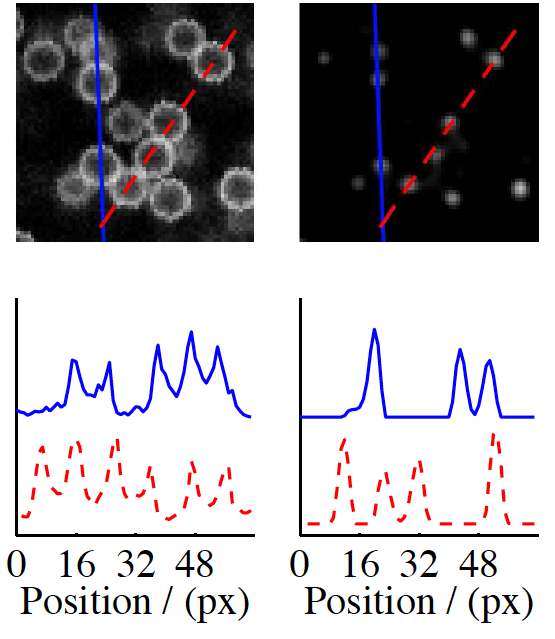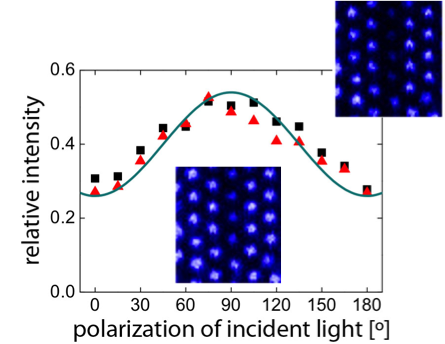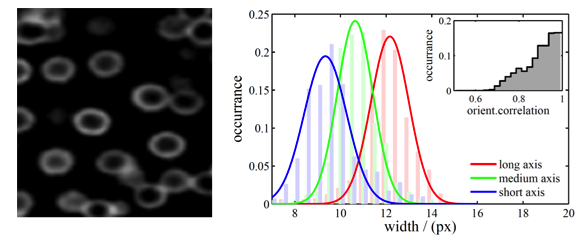Research - Colloids
Confocal microscopy of colloidal systems
Fluorescence confocal microscopy has been used to study the dynamical and structural properties of colloidal and granular matter in real space. Three dimensional positions and translational motions of the constituent particles can be measured with high precision to investigate various problems such as the glass transition in colloidal suspensions or capillary bridges in wet granular sediments. Other mechanical quantities like forces or rotational motions are hardly addressed due to the lack of experimental methods. Forces between particles in contact lead to a small deformations of the particle. If soft hollow spheres are used these deformations are large enough to be identified from confocal images. |
 
|
We have developed an algorithm to automatically extract the deformation state of such kind of particles which can be used to quantify absolute values as well as directions of the acting forces. In the second case of particle rotations existing experimental methods require anisotropic particle shapes or surface modifications that severely alter the general properties of the system. We present a new technique without these limitations. In analogy to polarized fluorescence after photo bleaching the angle dependence of the light absorption of the dye molecules is utilized to extract the rotational state of a particle. Besides, both methods, the deformation and rotation analysis, do not reduce the quality of the actual particle localization. They can help understanding complex reorganization processes in arrested states of colloidal and granular materials during aging or under external stimuli such as shear or compression.
 |
Left: raw image of hollow spheres raw. Right: convoluted image for positioning. The line profiles in the lower part of the images cross several particles. Even small deviations of the line from the center of the particle lead to significant reduction of the convolution intensity in the convoluted image. |
 |
 |
|
| The fluorescent intensity of particles that were bleached with polarized light depends on the polarization of the incident beam. | The deformation of hollow spheres can be determined from the convoluted images. |
- Preprint: Roth, M. , M. Franzmann, M. D'Acunzi, M. Kreiter, and G. K. Auernhammer;
Experimental analysis of single particle deformations and rotations in colloidal and granular systems;
arXiv:1106.3623v1 [cond-mat.soft] (2011).

